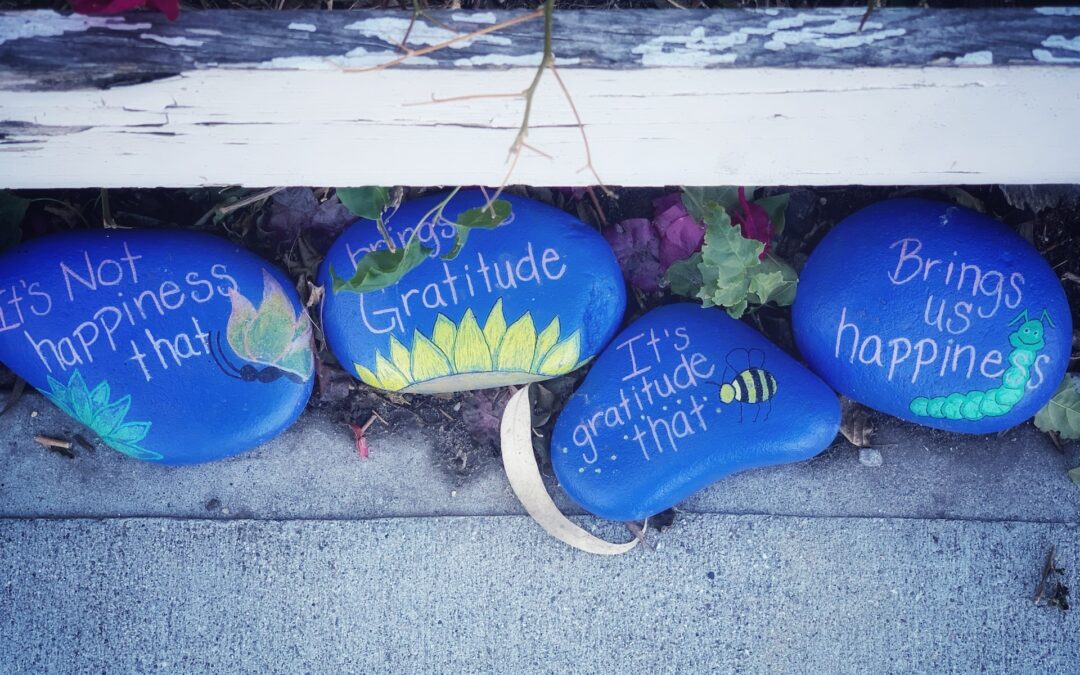
Coaching, Entrepreneurs, Self-Development
A captivated audience is interested and engaged. They’re happy to be there, and maybe even excited about the experience. The following tips can help you become a captivating speaker who mesmerizes your audience and keeps them coming for more.
Ask Questions
One great way to generate engagement is to ask questions. People love sharing their opinions. Ask them what they think, and when they respond, praise them for their input. Saying something like, “That’s a great question,” builds rapport and keeps the audience involved. Asking questions also helps direct their interest to specific topics.
Compliment Your Audience
Compliments go a long way in making your audience feel appreciated. Simple phrases like:
– “Thank you for bringing that up, Susan.”
– “That’s a great question, Bill. I’m glad you asked it.”
– “You must be a mind reader. That’s exactly what I was going to address next.”
Make your audience feel good about the experience you offer. Whether you’re complimenting their insights or their attire when meeting them beforehand, positive reinforcement keeps people interested in what you have to say.
Announce an Unadvertised Bonus for Sticking Around
At the beginning of your speech, express genuine gratitude for everyone attending and mention a special, unadvertised bonus for those who stay until the end. Make this bonus relevant to your topic. This surprise element keeps your audience curious and engaged throughout your presentation.
Paint a Picture with Powerful Emotions
The best speakers create an emotional connection with their audience. Instead of just listing facts, focus on how those facts translate into positive experiences. Use vivid, emotional language to paint a picture. Tell stories that evoke feelings and make your points more relatable. The more emotions you can stir, the more captivated your audience will be.
Use Body Language Effectively
Non-verbal communication is just as important as what you say. Use open, confident body language to establish credibility and connect with your audience. Make eye contact, use hand gestures to emphasize points, and move around the stage to engage different parts of the audience. This helps to keep people’s attention and makes your message more compelling.
Vary Your Vocal Tone
Monotone speaking can quickly lose an audience’s interest. Vary your vocal tone to emphasize key points, show excitement, and convey emotions. Changing your pitch, speed, and volume can make your speech more dynamic and keep listeners engaged.
Practice Active Listening
During Q&A sessions or interactive parts of your presentation, practice active listening. Show that you are fully engaged with what your audience members are saying. Nod, make affirming sounds, and respond thoughtfully. This demonstrates respect and appreciation for their input, fostering a stronger connection.
Include Visual Aids
Visual aids like slides, videos, or props can enhance your presentation and keep the audience engaged. Ensure they are relevant and add value to what you are saying. Visuals can help illustrate points, break up the monotony of speaking, and cater to visual learners in your audience.
Encourage Interaction
Encourage your audience to participate through small group discussions, polls, or interactive activities. Interaction keeps people engaged and feeling like they are part of the presentation, rather than passive listeners.
Tell Personal Stories
Sharing personal stories can make your presentation more relatable and memorable. People connect with stories on an emotional level, and a well-told personal anecdote can powerfully illustrate your points.
Captivating speakers aren’t born; they’re made. By practicing these tips, you can become an enthralling speaker who holds your audience’s attention from start to finish.

Coaching, Creative, Entrepreneurs, Self-Care
Setbacks are an inevitable part of life. Whether it’s a rejection, failure, or unexpected obstacle, facing challenges on our journey toward our goals is not only common but essential for growth and development. However, how we respond to these setbacks ultimately determines our success. Instead of allowing setbacks to derail our progress and diminish our motivation, we can choose to use them as opportunities for learning, growth, and resilience. Here are some strategies for remaining self-motivated after experiencing setbacks:
- Acknowledge Your Emotions: It’s natural to feel disappointed, frustrated, or discouraged after a setback. Instead of suppressing these emotions, allow yourself to experience and acknowledge them fully. Recognize that setbacks are a normal part of the journey and that feeling upset or disappointed is okay. By acknowledging your emotions, you can begin to process them in a healthy way and move forward with a clearer mindset.
- Reframe the Setback as a Learning Opportunity: Instead of viewing setbacks as failures, reframe them as valuable learning opportunities. Ask yourself what you can learn from the experience and how you can use it to improve and grow. Perhaps the setback revealed areas where you can strengthen your skills, adjust your approach, or broaden your perspective. Embrace the lessons learned from the setback and use them to fuel your motivation moving forward.
- Focus on What You Can Control: It’s easy to get caught up in dwelling on things beyond our control, leading to helplessness and frustration. Instead, focus your energy and attention on what you can control – your attitude, actions, and responses to the setback. Take proactive steps to address any factors within your control and make positive changes that will propel you forward.
- Set Realistic Goals: After experiencing a setback, it’s important to reassess your goals and expectations to ensure they are realistic and attainable. Break down your larger goals into smaller, manageable steps and focus on making progress one step at a time. Celebrate small victories along the way to boost your confidence and momentum.
- Cultivate Resilience: Resilience is the ability to bounce back from setbacks and adversity stronger than before. Cultivate resilience by developing a growth mindset – the belief that challenges are opportunities for growth and learning. Practice self-compassion and kindness toward yourself, and remind yourself of past successes and challenges you’ve overcome. Surround yourself with supportive friends, family, or mentors who can offer encouragement and perspective during difficult times.
- Stay Committed to Your Why: Remind yourself why you set your goals in the first place and your vision for your future. Reconnect with your sense of purpose and passion, and let it fuel your determination to keep moving forward despite setbacks. Remember that setbacks are temporary obstacles on the path to success, and with persistence and perseverance, you can overcome them.
Setbacks are a natural and inevitable part of any journey toward success. Instead of allowing setbacks to derail your motivation, use them as opportunities for growth, learning, and resilience. By acknowledging your emotions, reframing setbacks as learning opportunities, focusing on what you can control, setting realistic goals, cultivating resilience, and staying committed to your why, you can maintain self-motivation and continue making progress toward your goals, no matter what challenges may arise.

Coaching, Self-Development, Wellness
In the pursuit of our long-term goals, it’s easy to become consumed by the vision of our desired future. We invest our time, energy, and focus into chasing after success, believing that our happiness hinges upon reaching that ultimate destination. However, in our relentless pursuit of the future, we often overlook the abundance and fulfillment that exists in our daily lives.
Gratitude Makes You Happier
Neurologists have learned that feelings of gratitude actually change the way your brain works. When you are consciously aware of all the wonderful things in your life, you are happier and more content. When you are happy and feeling good about your life, it’s easier to believe that more good things await you down the road.
Gratitude Lowers Stress
A life filled with the struggle always to be better will lead to a life of stress. Yes, you want to reach your goals. You want to unlock all the potential that’s inside you. But finding a way to balance this desire with gratitude for what you’ve already accomplished and what you have in your life today is also important. When constantly pushing yourself forward, believing you aren’t good enough today is easy. Focusing on what you must be grateful for today lowers your stress level and helps you enjoy the journey to your ultimate goal.
Gratitude Makes You More Optimistic
Believing the grass is always greener on the other side is a sure way to ensure your dissatisfaction with life. It makes you feel like you may never get the life you want. This pessimism just makes everything in life harder. You may even just give up on your dreams because you don’t believe you can attain them. Keeping a grateful mindset offers a way to enjoy life now and look forward to the future once your goals are realized.
While long-term goals provide direction and purpose, they should not overshadow the importance of living in the present moment and expressing gratitude for what we already have achieved. Here’s why striking a balance between long-term aspirations and daily gratitude is essential for both happiness and success:
- Finding Joy in the Journey: While achieving long-term goals can bring a sense of accomplishment, true happiness lies in the journey itself. By embracing the process and finding joy in the small victories along the way, we can experience fulfillment and satisfaction in the present moment, rather than waiting for some distant future to bring us happiness.
- Building Resilience: Acknowledging and appreciating our past achievements fosters resilience and confidence in our ability to overcome challenges and achieve future goals. Reflecting on how far we’ve come reminds us of our strengths and capabilities, empowering us to face obstacles with optimism and determination.
- Fostering Positive Mindset: Practicing gratitude shifts our focus from what we lack to what we already have, fostering a positive mindset and outlook on life. When we approach our goals from a place of abundance rather than scarcity, we attract more opportunities for growth and success into our lives.
- Enhancing Well-Being: Research has shown that expressing gratitude has numerous benefits for our physical, mental, and emotional well-being. From reducing stress and anxiety to improving sleep and overall happiness, expressing gratitude for the blessings in our lives promotes holistic health and wellness.
So how can we strike a balance between our long-term goals and daily gratitude? Here are some practical strategies to integrate gratitude into your daily life:
- Daily Reflection: Take a few moments each day to reflect on what you’re grateful for, whether it’s your health, relationships, accomplishments, or simple pleasures like a beautiful sunset or a delicious meal.
- Express Appreciation: Don’t hesitate to express gratitude to others for their support, kindness, or contributions to your life. A heartfelt thank you can strengthen relationships and cultivate a culture of positivity and appreciation.
- Celebrate Small Wins: Acknowledge and celebrate the small victories and milestones you achieve along the way toward your long-term goals. Each step forward, no matter how small, is worthy of recognition and celebration.
- Practice Mindfulness: Incorporate mindfulness into your daily routine to stay grounded in the present moment and develop awareness of the beauty and abundance surrounding you.
Obtaining a grateful spirit doesn’t take much time and effort, but it makes a huge difference in your life. Start by keeping a small notebook with you or using an app on your phone to note the little things that happen throughout your day for which you are grateful. Some people prefer to keep a gratitude journal by their bed and add a short list of things that they are grateful for that day. Give it a try if you feel you’ve been too focused on a goal, making you unappreciative of what you already have.
While long-term goals provide direction and purpose, true happiness is found in embracing the journey and expressing gratitude for the blessings in our lives. By striking a balance between our aspirations for the future and appreciation for the present moment, we can experience greater fulfillment, resilience, and well-being on our path to success. So, as you pursue your long-term goals, remember to pause, reflect, and express gratitude for the abundance and joy that already exists in your life.

Coaching, Creative, Entrepreneurs, Self-Development
Do you ever find yourself walking past the hallway of forgotten projects in your home? Perhaps it’s a stack of half-completed DIY endeavors or a collection of abandoned hobbies gathering dust in a corner. Or maybe you’ve mastered the art of stuffing unfinished projects into closets, out of sight and out of mind.
Whatever the case may be, the truth is that leaving a trail of unfinished projects can have more consequences than just cluttering up your space. In fact, this habit could impact you in several ways you might not even realize.
- Loss of Motivation: Each unfinished project represents a missed opportunity and can chip away at your motivation over time. The more projects you leave incomplete, the harder it becomes to muster the enthusiasm to start something new.
- Feelings of Guilt and Shame: Every unfinished project reminds you of your perceived failure to follow through. This can lead to feelings of guilt and shame, further dampening your motivation and self-esteem.
- Wasted Time and Resources: Unfinished projects often require an investment of time, money, and energy. These resources go to waste when left incomplete, leaving you with little to show for your efforts.
- Missed Opportunities for Growth: Completing projects provides valuable learning and personal growth opportunities. When you consistently leave things unfinished, you miss out on the chance to develop new skills, overcome challenges, and achieve your goals.
So how can you break free from the cycle of unfinished projects and regain control of your time and energy? Here are some strategies to help you get started:
- Set Realistic Goals: Be honest about what you can accomplish within a given timeframe. Set smaller, achievable goals that you can tackle one step at a time.
- Prioritize Your Projects: Not all projects are created equal. Identify the projects that align most closely with your values, interests, and long-term goals, and focus your efforts on completing them first.
- Break it Down: Large projects can feel overwhelming, making it easy to procrastinate or abandon them altogether. Break big projects into smaller, more manageable tasks and tackle them one at a time.
- Establish Accountability: Share your goals with a friend, family member, or mentor who can hold you accountable and encourage you. Accountability can help keep you motivated and focused on your objectives.
- Celebrate Progress: Acknowledge and celebrate your achievements, no matter how small. Take pride in each step forward and use it as motivation to keep moving towards your goals.
- Learn from Setbacks: It’s natural to encounter setbacks and obstacles along the way. Instead of viewing them as failures, see them as opportunities to learn and grow. Reflect on what went wrong and adjust your approach accordingly.
By adopting these strategies and making a conscious effort to finish what you start, you can break free from the cycle of unfinished projects and reclaim your sense of accomplishment and satisfaction. Remember, every completed project is a step closer to realizing your full potential and living a more fulfilling life. So why wait? Start finishing what you start today!

Coaching
There’s an old saying that goes, “the family that prays together stays together.” Today, many experts believe that could be extended to say that couples who share all types of values and goals are likely to have a stronger relationship, and experience more success.
Why struggle on your own when you and your significant other can support each other in living out your dreams? Does that sound like an attribute you would like your relationship to have? Try these tips for couples who want to aim higher and work smarter — together.
Tips for Couples Who Want to Aim Higher
- Set joint goals. Your mate probably knows more about you than anyone else in your life. Double your resources by pulling together to agree on your objectives and how to reach them. Complementing each other’s strengths and weaknesses will help you to cover more ground.
- Share encouragement. If a pep talk inside your own head can recharge your enthusiasm, imagine how much you can encourage your mate, too. You can also gain motivation from having your partner on your side, so cheer each other on.
- Support one another. There’s a good reason why fitness buffs sign up for cycling classes instead of riding a stationary bike alone. Just the presence of others can help you to persevere, and someone you’re close to is more influential than a gym member you just met.
- Be someone and be with someone who is conscientious. Studies show that your mate has a major impact on your career path. A conscientious partner provides a positive role model and practical support.
Tips for Couples Who Want to Work Smarter
- Be realistic. To savor the rewards for your efforts, your goals need to be realistic and attainable. Your significant other can advise you if you’re taking on more than you can handle.
- Be accountability partners. It’s easy to lose track of your goals when you’re keeping up with daily responsibilities. Checking in with each other reminds you of your destination, and what you need to do to get there.
- Keep your plans updated. Being flexible allows you to adapt to changing circumstances. As you evaluate your progress, you may modify your route.
- Take turns. Working in pairs also gives you the advantage of rotating your roles. For example, maybe you’ll both complete your degrees by having one partner work until the other graduates.
- Calm down. While it’s commendable to feel enthusiastic about your goals, too much intensity triggers chronic stress. Couples can provide relief for each other by suggesting when to take a break. Be patient with one another as well.
- Weigh risks. Sometimes you need to take chances to pursue your dreams, but you also want to protect your future. Provide a sounding board for each other if you’re trying to figure out whether a bold step is worthwhile or not. You could shorten your commute by ignoring the speed limits, but finding a job closer to home would be a more reasonable (and safer!) decision.
- Bounce back from disappointment. Research suggests that unfulfilled goals tend to cause more discomfort than having no goals at all. A supportive partner makes it easier to remain content and motivated, because they can remind you to count your blessings if you feel like you’re missing out.
- Enjoy the process. While having specific and measurable goals can help you to become more successful, your happiness depends on appreciating the journey as well as the destination. Traveling with someone you love makes any trip more entertaining, so enjoy the journey!
Revitalize your relationship by moving ahead in the same direction. Team up with your partner to set goals and hold each other accountable. You’re likely to accomplish more and build a closer connection along the way.





